Merida celebrated its 25th anniversary in 2013, however the company behind the brand company (Merida Industry Company or MIC) was founded much earlier, in 1972. According to Merida’s own telling of its history, it was a sign in a US bike shop — a refusal to service all Taiwanese-made bikes — that inspired Ike Tseng to establish MIC. He wanted to prove that a Taiwanese company could manufacture high-quality bikes.
MIC’s growth and success developed slowly. By the late ’80s, MIC had a good reputation as an OEM factory and started testing the market for its own brand of bikes. In order to preserve its dealings with US manufacturing partners, Merida bikes was launched in Scandinavia before entering the European market via Germany.
Merida is now one of Taiwan’s largest companies with manufacturing facilities in Taiwan, China and Germany. The company is also known for holding a 49% share of Specialized, which was acquired in 2001. A Taiwanese company rescues an American brand? Ike Tseng must have savoured that moment of poetic justice. Interestingly, Merida continues to honour an agreement to stay out of the US market.

Merida has been supplying Lampre with its bikes since 2013. According to a recent interview, the deal accounts for less than 5% of the company’s advertising budget, but it has already worked to raise the prestige of the brand as well as its market share.
Merida divides its road range into three categories — race, race aero and endurance. Each category gets its own frame design: Scultura, Reacto, and Ride, respectively.
For this review, the local Merida distributor, Advance Traders, supplied a Reacto Team-E that sits near the top of its road aero range. The bike features Shimano’s Dura Ace Di2 transmission, Rotor cranks and a Fulcrum Red Wind H50 wheelset with a retail price of $8,999.
Before the Ride
Merida took the aerodynamic principles that were developed for its Warp time-trial bikes and applied them for the road to yield the Reacto. The frameset is sculpted accordingly, making extensive use of a truncated aerofoil shape that Merida calls its “NACA fastback profile”.
There are other touches that suit the aerodynamic intentions of the frameset. The rear caliper is mounted under the chainstays while an integrated binding system is employed for the seatpost. The rear brake cable is routed internally, as is the Di2 wiring, and an internal battery is mounted in the seatpost.
Independent testing has shown that the Reacto design cuts through the air effectively. Germany’s Tour magazine compared the wind tunnel performance of the Reacto with a Cervelo S5, BMC TMR01, Giant Propel, Canyon Aeroad, Storck Aernario, Scott Foil, Specialized Venge and a Ridley Noah and it out-performed all but the S5. It is worth noting that the difference between the top-ranked performers in this test, which employed a dummy mounted on each bike and determined the power required to ride at 45km/hr, was just a few watts (S5 201W; Reacto 203W; BMC TMR01 205W; Giant Propel 207W; Specialized Venge 208W).
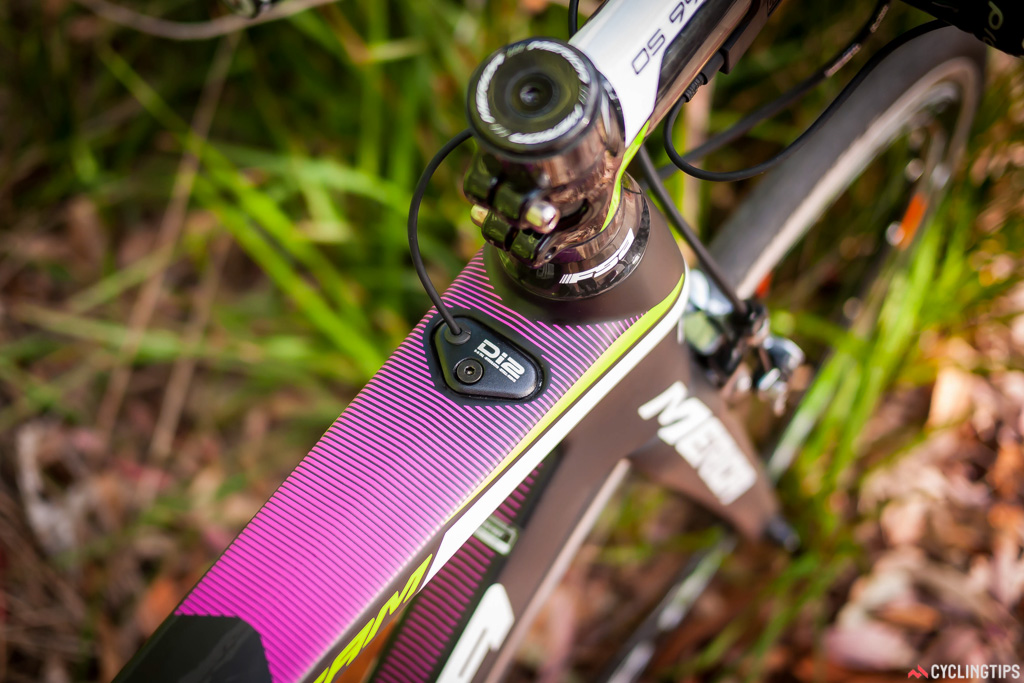
Merida’s marketing places more emphasis on the manufacturing of the Reacto than its aerodynamic capabilities. The company employs an “anti-wrinkle system” during frame moulding to improve the strength of the frame while nanoparticles are added to the carbon to improve impact resistance. In addition, flax fibres are added to the seattube, stays, and fork legs to reduce vibrations. At the same time, Merida has kept pace with evolving standards by incorporating a BB386EVO bottom bracket and direct-mount brake calipers into the design.
Compared to lower-priced models in the Reacto range, the Team-E frameset utilises extra-high modulus carbon fibre. The blend, referred to as CF4, is expensive but it makes for a weight saving of around 120g when compared to a Reacto constructed from the cheaper CF3 blend.
The Reacto Team-E is offered in six sizes, as set out in the geometry table below:
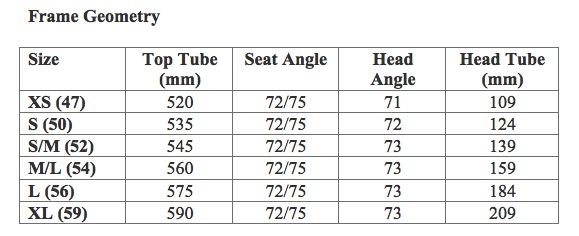
The Reacto has aggressive geometry with a relatively short headtube and a high bottom bracket (61mm drop is used for all frame sizes). The same seattube angle is used for all frame sizes, where the seatpost has a “Flip-Flop Head” that allows the seat angle to be set at 72 or 75 degrees. As a consequence, there is a lot of range to adjust the saddle setback for both road and TT riding.
The Reacto Team-E gets a little of Lampre’s fuchsia colouring. The finish of the bike is excellent with colour-matched wheels, saddle and bottle cage, and there are some team sponsor logos as well. Such attention to detail adds to the team-replica feel of the bike, though a second bottle cage in matching colours would be ideal.

The Reacto Team-E is equipped with Shimano’s Dura Ace Di2 levers and derailleurs as well as direct-mount calipers, chain and cassette. Fulcrum’s Red Wind H50 wheelset utilises 50mm carbon/alloy hybrid rims that match the aerodynamic intentions of the frameset. Similarly, Merida specifies narrow handlebars for all but the largest frame size (XS-S, 400mm; S/M-L, 420mm; XL, 440mm. Note: these widths apply to the drops only as the handlebars are 20mm narrower at the levers).
The rest of the build makes use of parts from Lampre’s various sponsors. Rotor supplies its Flow alloy crankset, Prologo the Nago Evo saddle and bartape, while FSA takes care of the bars, stem and headset, and Continental, the tyres. Out of the box, the weight for a size M/L is 7.32kg sans pedals and bottle cages.
The recommended retail for the Reacto Team-E is $8,999. Fans of Merida and/or Lampre might also be interested in the Reacto E-Team Ltd that celebrates Rui Costa’s world championship and is lighter but more expensive ($9,999). For more information visit the Merida website.
After the Ride
The market is awash with great carbon race bikes and the Reacto is yet another that offers a stiff, responsive ride that is balanced out by enough compliance to be comfortable on all but the most rugged of road surfaces. Indeed, I continue to be amazed at how well manufacturers manage to achieve this paradoxical balance of stiffness and comfort. The Reacto remains a race bike though, so there is no plushness in its measure of compliance.
For most of my time on the Reacto Team-E, I felt like I was riding a TT bike. The narrow handlebars probably accounted for most of this impression but there was also the stiff efficiency of the chassis and a tangible sense that the bike was a little quicker than a non-aerodynamic design. As discussed above, wind tunnel testing bears this out, but out in the real world, there is no sense of the wattage saved but rather of greater speed.
I never study the geometry of a bike before I start riding it; instead, I prefer to form my impressions and then take a look at the numbers. From the outset, the Reacto had very quick steering and a nervous disposition. As a consequence, I expected a steep head angle, but at 73 degrees, it wasn’t steep enough to account for the quick steering. Merida doesn’t provide a value for the steering trail, but I presume it must be pretty short to produce a very quick steering response.
As noted above, the Reacto has a high bottom bracket (61mm drop) and this added to the bike’s nervous disposition by keeping my centre of gravity high. As a consequence, the bike was very demanding to ride when cornering and descending. Always, there was the threat of oversteer.
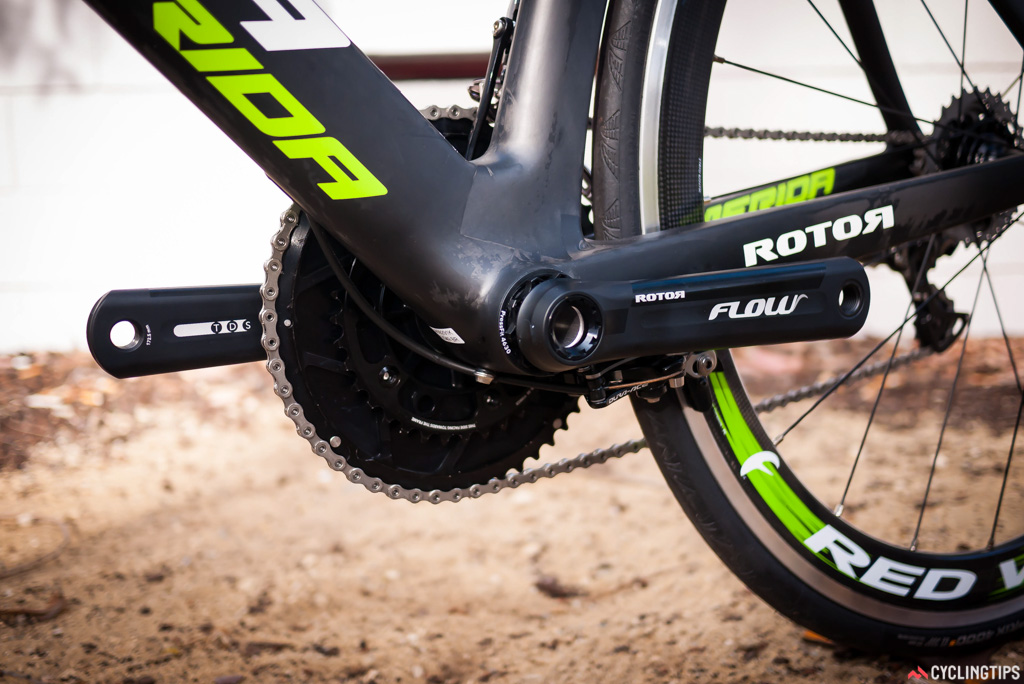
On balance, I could forgive much of the Reacto’s nervousness, because the bike worked so well in many other regards. Out of the saddle, sprinting or attacking a climb, the bike surged with ease. Back in the saddle, churning out a threshold effort, the bike kept urging me for more. In short, the Reacto Team-E is a race-tuned bike, and as such, really demands an experienced rider (but I still couldn’t recommend the bike for criterium racing).
Fulcrum’s 50mm Red Wind wheels added to the bike’s handling difficulties, as they were highly susceptible to crosswinds. Holding a straight line was difficult, much like trying to hold off a barging group of rugby forwards, and after a week of strong winds I was sick of the extra effort. A switch to low profile wheels addressed the problem immediately, but a bike with thick tubing and aerodynamics like the Reacto really demands taller wheels.
The Rotor crankset performed well, but compared to a Dura Ace crankset, the front shifting was not nearly as smooth or snappy. At the same time, the solid big ring amplified chain noise to the point where it resembled the caterpillar track of an army tank. In contrast, the small chainring was silent. The rest of the build performed flawlessly, as can be expected for a high-end build.

Final Thoughts and Summary
The Reacto Team-E does a very good job on delivering all that can be expected for a high-end race aero bike. It is stiff and responsive; the aerodynamic design is effective; there is enough comfort to suit long road stages; and plenty of fruit to justify the $8,999 asking price. Indeed, the team-replica styling of the bike adds to its appeal.
Be warned: this is not a bike that allows the rider to drift off to ponder other matters. The steering is very quick and the high bottom bracket makes the bike demanding to handle. However, experienced riders that bring their race-day focus to the bike won’t have much trouble handling the Reacto (unless it is a technical criterium course).
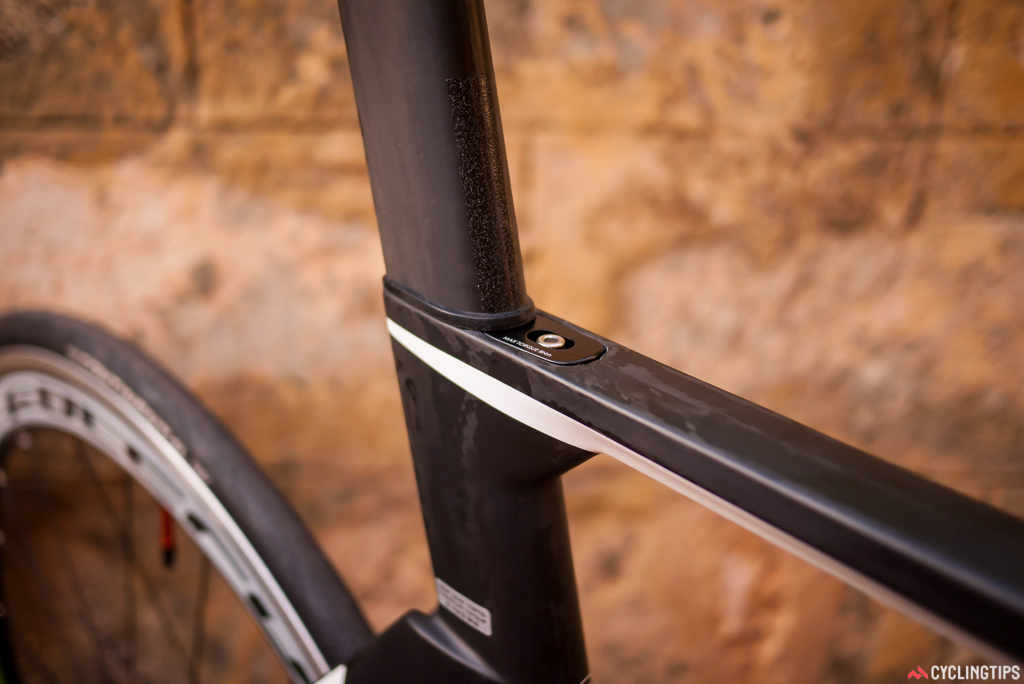
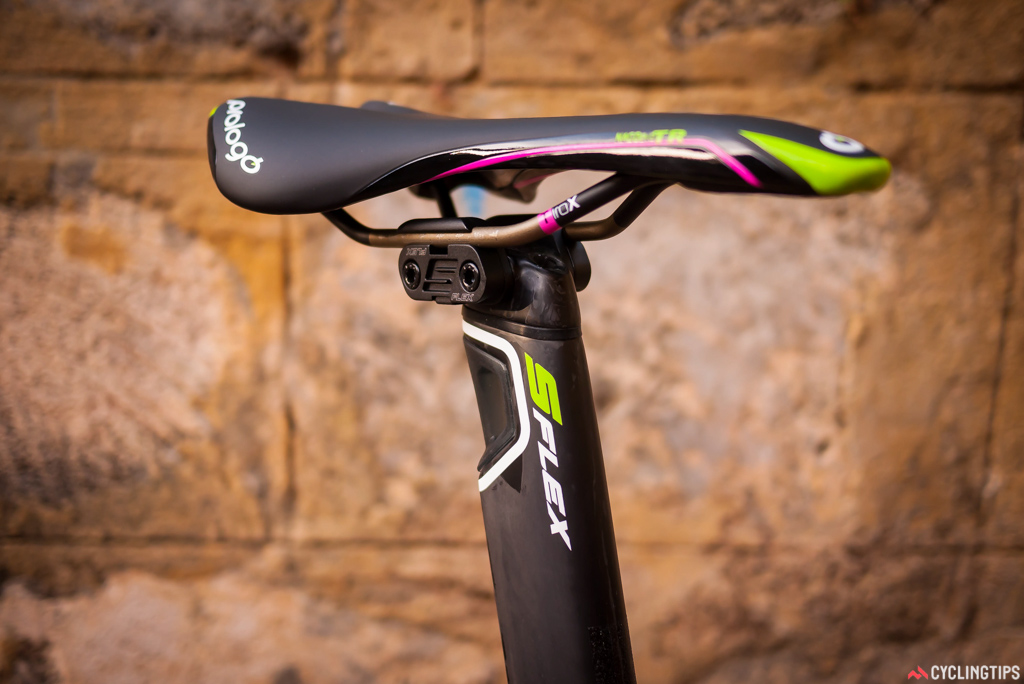
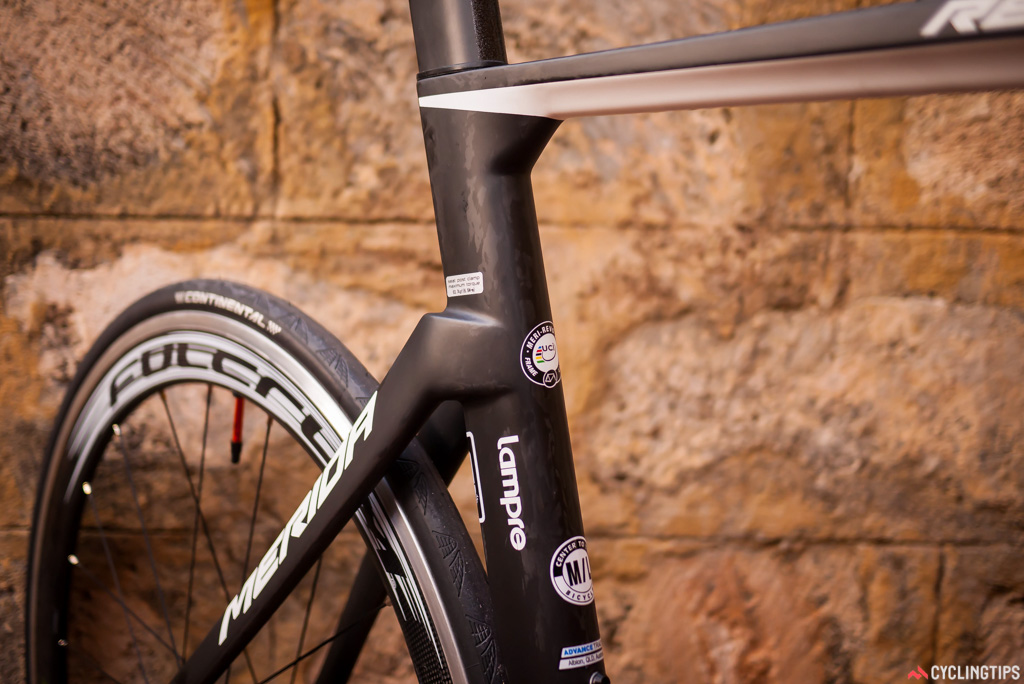
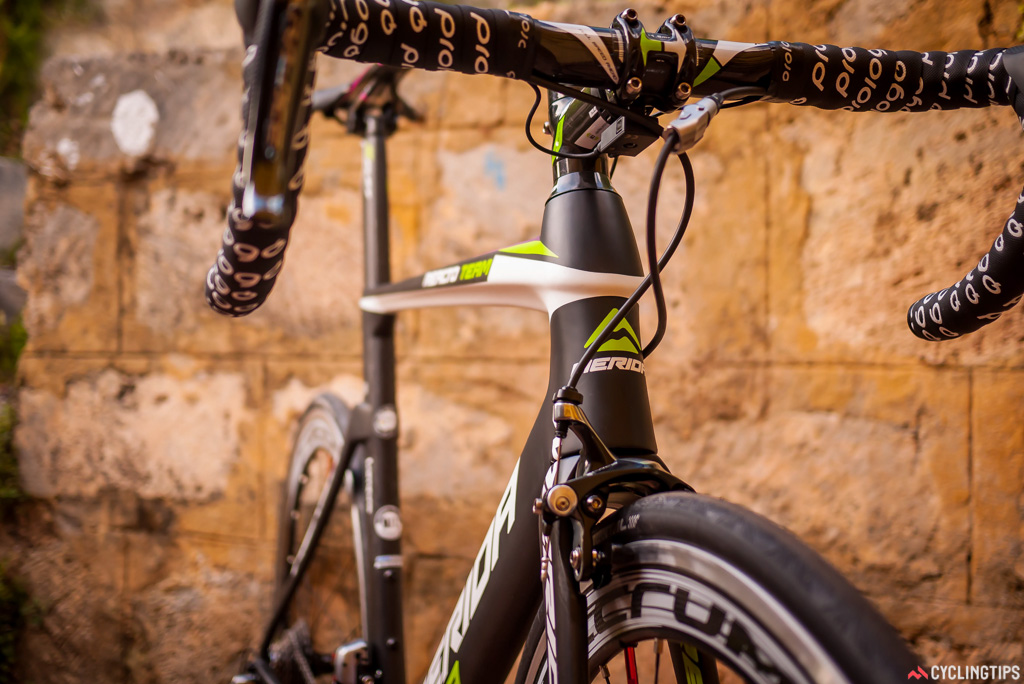

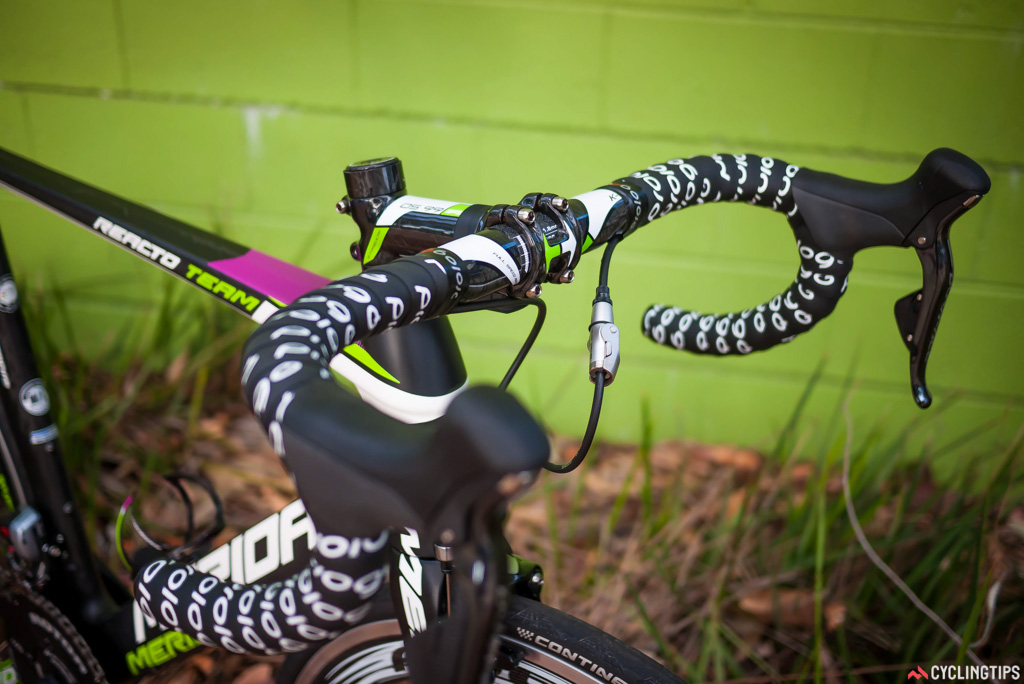
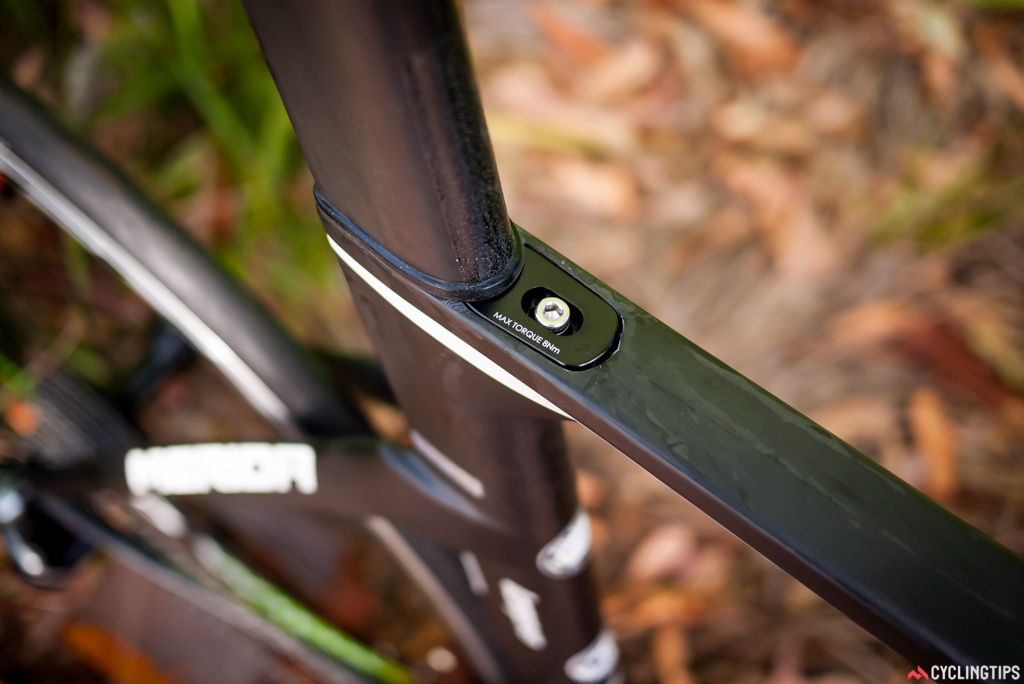
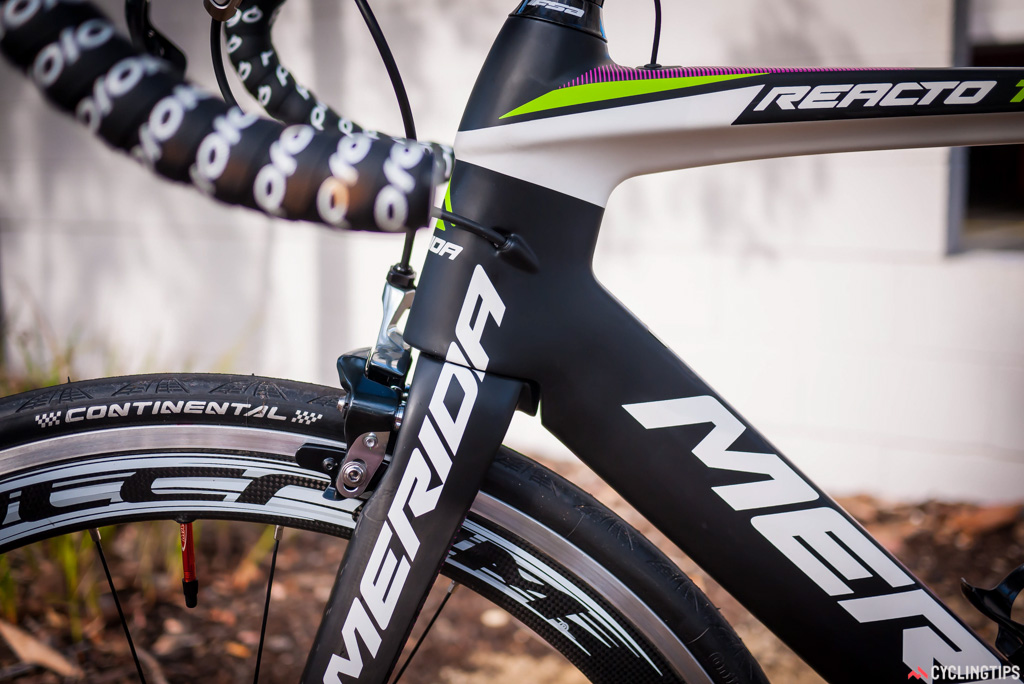
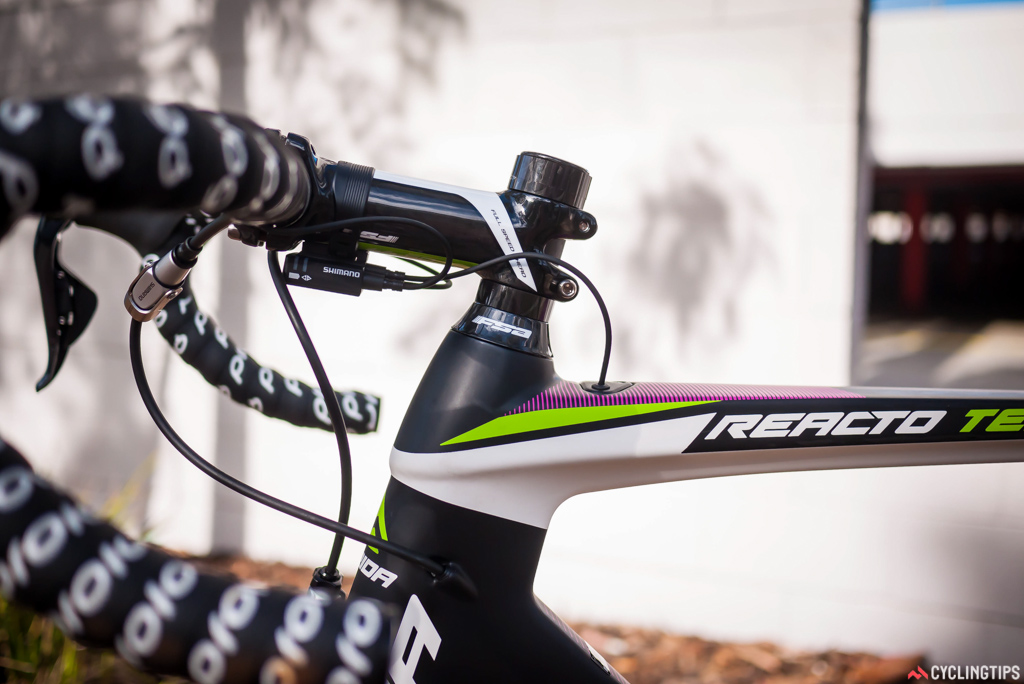

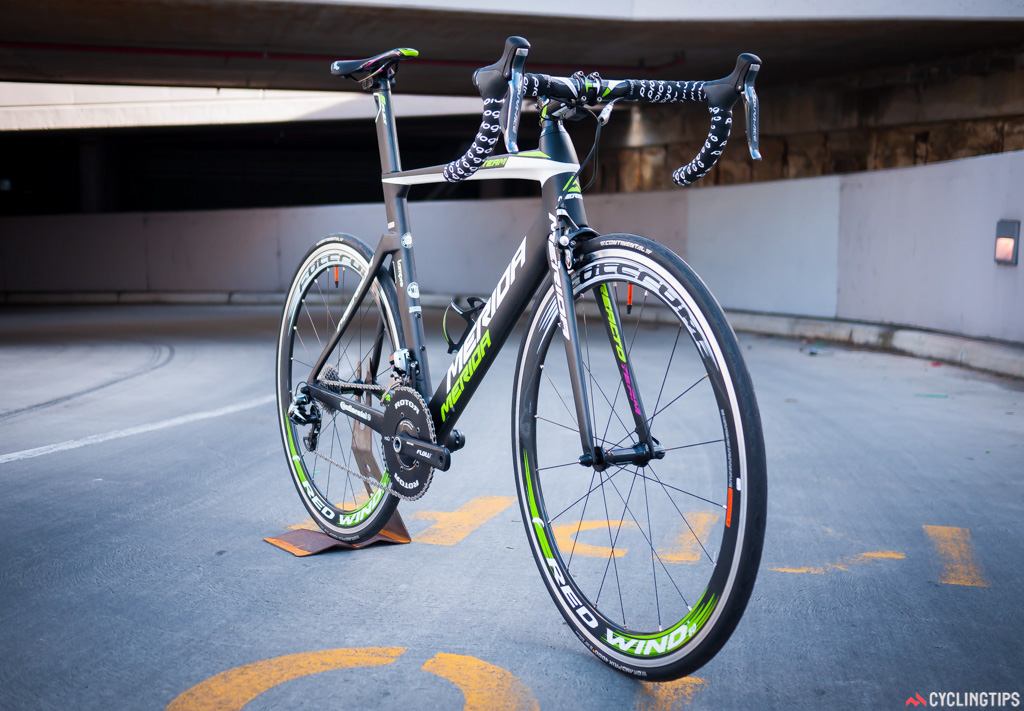
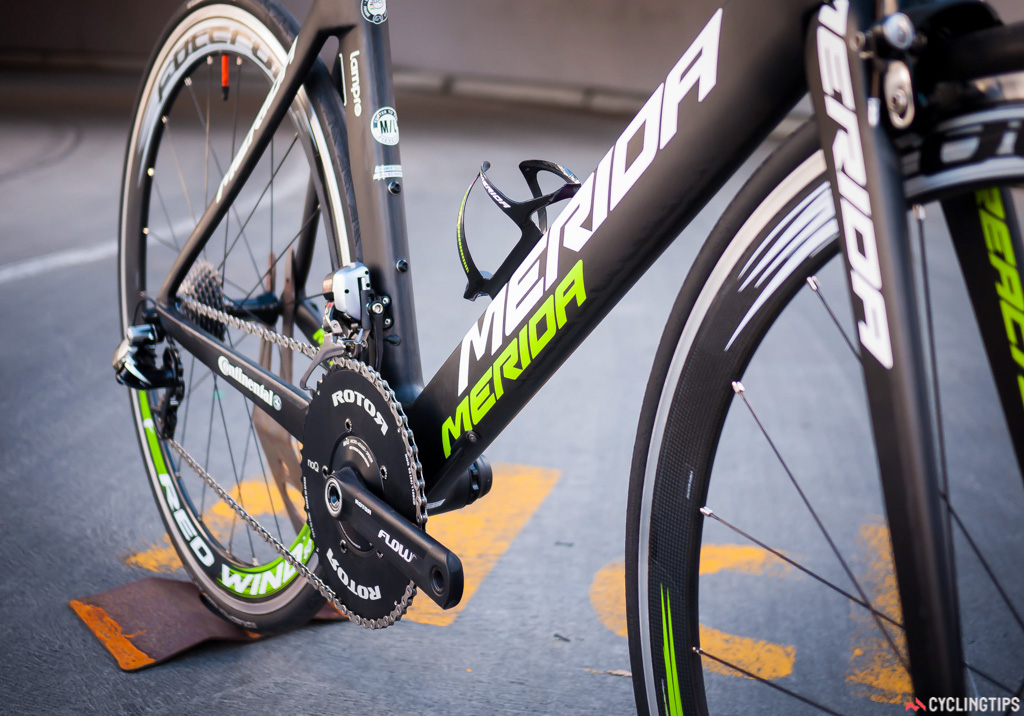
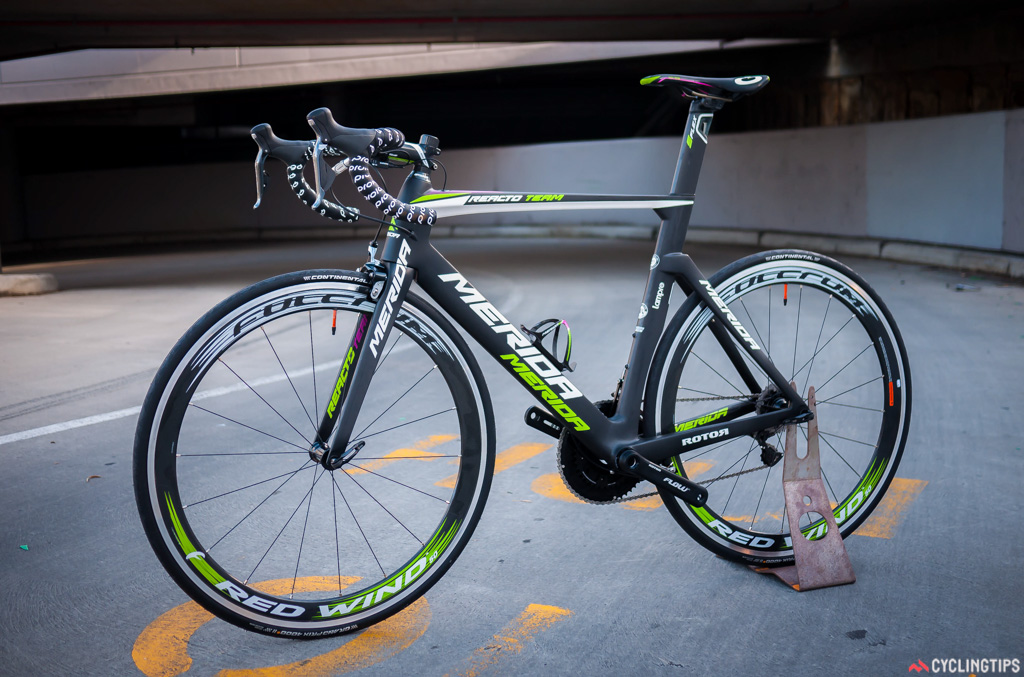
WRAP-UP
- Fast
- Stiff and efficient
- Comfortable race bike
- Team-replica styling
- Very quick steering
- Nervous handling
- Wheels highly susceptible to crosswinds
- Rotor’s solid chainring is noisy

